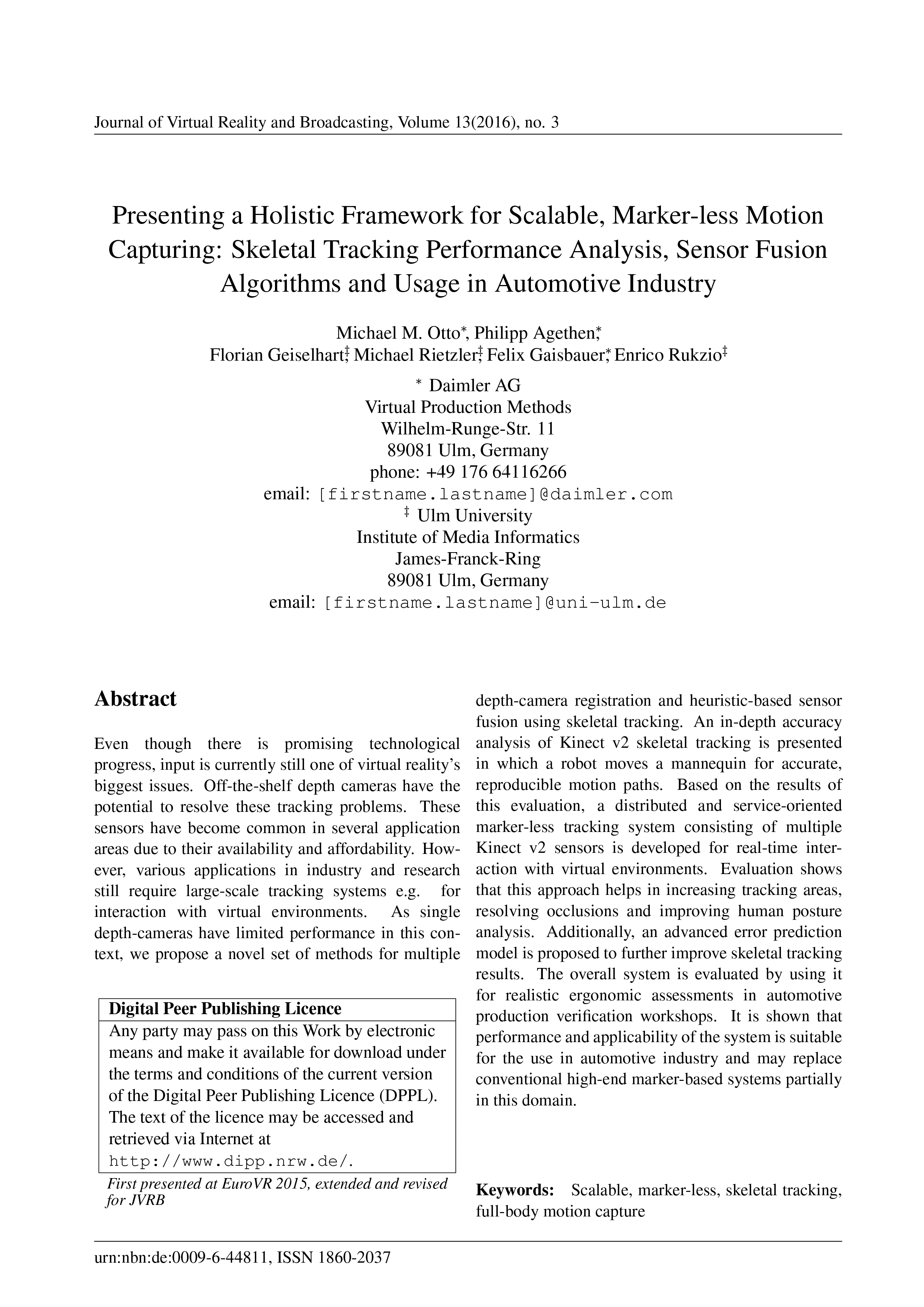Presenting a Holistic Framework for Scalable, Marker-less Motion Capturing: Skeletal Tracking Performance Analysis, Sensor Fusion Algorithms and Usage in Automotive Industry
DOI:
https://doi.org/10.20385/1860-2037/13.2016.3Keywords:
full-body motion capture, markerless, scalable, skeletal trackingAbstract
Even though there is promising technological progress, input is currently still one of virtual reality's biggest issues. Off-the-shelf depth cameras have the potential to resolve these tracking problems. These sensors have become common in several application areas due to their availability and affordability. However, various applications in industry and research still require large-scale tracking systems e.g. for interaction with virtual environments. As single depth-cameras have limited performance in this context, we propose a novel set of methods for multiple depth-camera registration and heuristic-based sensor fusion using skeletal tracking. An in-depth accuracy analysis of Kinect v2 skeletal tracking is presented in which a robot moves a mannequin for accurate, reproducible motion paths. Based on the results of this evaluation, a distributed and service-oriented marker-less tracking system consisting of multiple Kinect v2 sensors is developed for real-time interaction with virtual environments. Evaluation shows that this approach helps in increasing tracking areas, resolving occlusions and improving human posture analysis. Additionally, an advanced error prediction model is proposed to further improve skeletal tracking results. The overall system is evaluated by using it for realistic ergonomic assessments in automotive production verification workshops. It is shown that performance and applicability of the system is suitable for the use in automotive industry and may replace conventional high-end marker-based systems partially in this domain.
Published
2017-02-28
Issue
Section
EuroVR 2015





